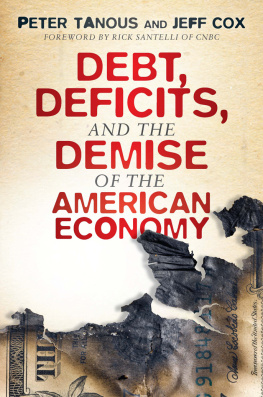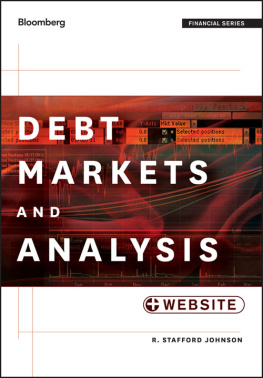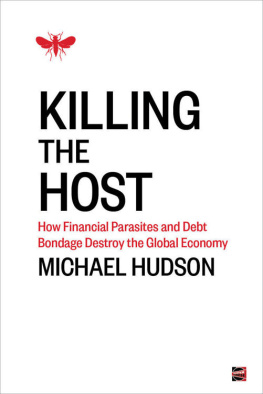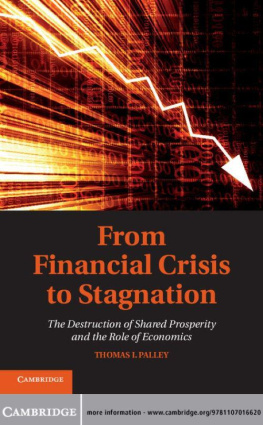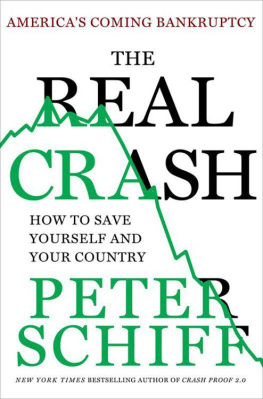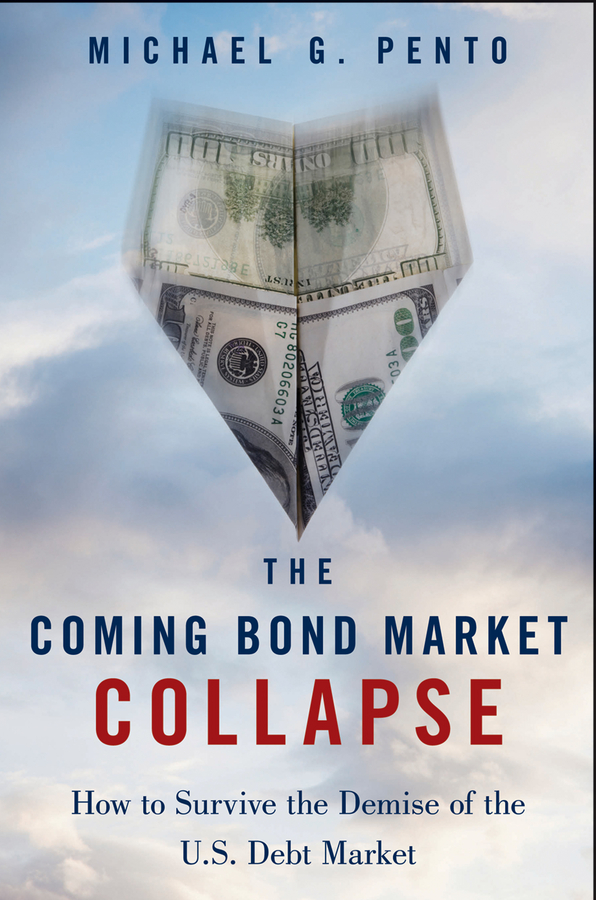Contents

Cover Design: John Wiley & Sons, Inc.
Cover Image: Mike Kemp/Jupiter Images
Copyright 2013 by Michael G. Pento. All rights reserved.
Published by John Wiley & Sons, Inc., Hoboken, New Jersey.
Published simultaneously in Canada.
No part of this publication may be reproduced, stored in a retrieval system, or transmitted in any form or by any means, electronic, mechanical, photocopying, recording, scanning, or otherwise, except as permitted under Section 107 or 108 of the 1976 United States Copyright Act, without either the prior written permission of the Publisher, or authorization through payment of the appropriate per-copy fee to the Copyright Clearance Center, Inc., 222 Rosewood Drive, Danvers, MA 01923, (978) 750-8400, fax (978) 646-8600, or on the Web at www.copyright.com . Requests to the Publisher for permission should be addressed to the Permissions Department, John Wiley & Sons, Inc., 111 River Street, Hoboken, NJ 07030, (201) 748-6011, fax (201) 748-6008, or online at http://www.wiley.com/go/permissions .
Limit of Liability/Disclaimer of Warranty: While the publisher and author have used their best efforts in preparing this book, they make no representations or warranties with respect to the accuracy or completeness of the contents of this book and specifically disclaim any implied warranties of merchantability or fitness for a particular purpose. No warranty may be created or extended by sales representatives or written sales materials. The advice and strategies contained herein may not be suitable for your situation. You should consult with a professional where appropriate. Neither the publisher nor author shall be liable for any loss of profit or any other commercial damages, including but not limited to special, incidental, consequential, or other damages.
Disclosure: Michael Pento is the Founder and President of Pento Portfolio Strategies (PPS). This work has been written solely for informational purposes and readers should contact an investment advisor before acting on any information contained in this book. No information in this work constitutes an offer to sell or buy any financial instruments or to provide any investment services. Readers understand that there is inherent risk in investing. PPS is a Registered Investment Advisor, registered with the State of New Jersey.
For general information on our other products and services or for technical support, please contact our Customer Care Department within the United States at (800) 762-2974, outside the United States at (317) 572-3993 or fax (317) 572-4002.
Wiley also publishes its books in a variety of electronic formats. Some content that appears in print may not be available in electronic books. For more information about Wiley products, visit our web site at www.wiley.com .
Library of Congress Cataloging-in-Publication Data
Pento, Michael, 1963
The coming bond market collapse : how to survive the demise of the U.S. debt market / Michael Pento.
pages cm
Includes bibliographical references and index.
ISBN 978-1-118-45708-5 (cloth) ISBN 978-1-118-45717-7 (ePDF)
ISBN 978-1-118-45716-0 (Mobi) ISBN 978-1-118-45715-3 (ePub)
1. Bond marketUnited States. 2. BondsUnited States. I. Title.
HG4910.P426 2013
332.6323dc23
2012049828
To my wife, Jenifer, and my two children, Michael and Giamarie. It is my hope and prayer that my kids will grow up in a land that offers them the freedom to bring their dreams to fruition, rather than a government-provided guarantee of mediocrity. To my parents, Frank and Mary, who ignited my passion for freedom. And to God for allowing us all the autonomy to choose.
Introduction
In November 2011, I founded a money management firm, Pento Portfolio Strategies, for the primary purpose of preparing clients investments for what I saw as the next financial crisis. Back in 2005, I correctly predicted the bubble in real estate. However, the new catastrophe I see emerging makes the housing bubble pale in comparison. America now sits in the latter stages of the biggest asset bubble in the history of the planet. The bursting of this bubble will send shock waves throughout the global economy and will have a gravely negative impact on the American standard of living. This bubble will have a profound effect on all Americansespecially those who fail, or refuse, to see it coming. It will affect your job, the value of your house, your savings, and your way of life. The bubble is U.S. Treasury debt.
But dont think of this author as some Cassandra that is calling for the end of the United States. Cartographers will not have to expunge America from their maps. This great country will survive and thrive after the collapse of the U.S. debt market occurs. The point of this work is to guide our leaders down a path that leads toward a direction that mollifies the damage already done. It will also offer investors the best chance to preserve their current standard of living.
Investors, seeking refuge in what they perceive as the safest of all havens (U.S. Treasuries), have been procuring government debt at unprecedented rates despite the record low interest rates they offer. The Federal Reserve, under the stewardship of Ben Bernanke, has rendered our continued solvency as a nation dependent on the perpetual continuation of artificially produced low interest rates. However, it is clear that Bernanke cannot keep rates low forever. The Federal Reserves misguided effort to counterfeit our way to prosperity, coupled with the flawed Keynesian deficit spending model that our government embraces with alacrity, has led to record debts that will never be able to be repaid.
The bursting of the bubble in Treasuries will cause a massive interest rate shock that will drive the U.S. consumer and the government into bankruptcy and send many people throughout the globe into poverty. In order for you to survive the coming debt crisis, you need to be informed and prepared.
In this current economic environment, our government seeks a condition of perpetual inflation in order to maintain the illusion of prosperity and solvency. The problem with this addiction to money printing is that once a central bank starts, it cant stop without dire, albeit in the long-term healthy, economic consequences. And the longer an economy stays addicted to inflation and borrowing, the more severe the eventual debt deflation will become. As a result, our central bank is now walking the economy on a very thin tightrope between inflation and deflation. The prevalent idea among our government and central bank is that we can borrow and print even more money in order to eliminate the problems caused by too much debt and inflation. But more inflation can never be the cure for rising prices, and piling on more debt cant solve a condition of insolvency.
Since its inception in 1913, the Federal Reserve has been the perpetuator of asset bubbles. From the Fed-induced bubble of the 1920s that led to the Great Depression, to modern-day bubbles in Nasdaq and real estate, the Federal Reserves manipulation of the cost of money has created a bubble economy. And today, the Federal Reserve is perpetuating its largest bubble since its inceptionthe bubble in the U.S. debt. This book will give you the tools to understand how the Fed created these bubbles and what we as a nation can do to return this economy to a more stable footing. In addition, investors will learn the best way to protect their wealth before and after the bubble bursts.
After World War II the world moved away from hard metal currencies in favor of fiat currencies. Fiat currencies are created by government decree, backed by nothing, and have their worth based on the faith placed in autocrats. Governments can incur tremendous amounts of debt and can always make good on their principal and interest payments because they can print money. Therefore, default initially comes through inflation. Default via inflation is worse than actual default. Inflation is a hidden tax that disproportionately affects those least able to pay it: the middle class and the poor. Default via inflation is always the last step before an actual default.



